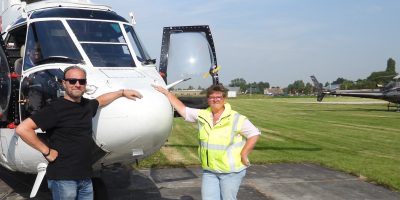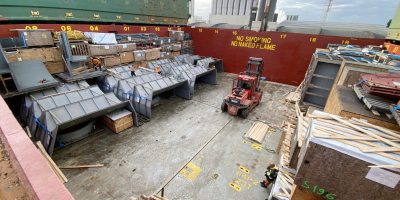
Transporting valuable artefacts from the exhibition on pharaoh Ramses II from Brussels to Sydney, was a feat for Singapore Airlines. It takes a lot of strategic thinking to transport such cultural heritages quickly and safely. You can also read this contribution in the November 2023 issue of Flows magazine.
Pharmaceuticals make up 70-80% of Singapore Airlines’ cargo. During the pandemic, the airline carried a large number of covid vaccines. It also handles general cargo and dangerous goods.
“If the cargo fits in a Boeing 747, we take up the challenge,” sums up Stijn Hardeman, cargo sales executive at Singapore Airlines. “In the near future, we will focus on the express market again, as we will get another passenger aircraft to Brussels in 2024.”
Invaluable value
In recent years, the airline has been transporting large paintings and sculptures, including masterpieces by Manet, Monet and Renoir, “Usually it’s only about one or two pallets of cargo that has to go on the plane.” Transporting the artefacts of Ramses II was an entirely different challenge. “This time it involved the entire exhibition, as shown at the Louvre in Paris. When the request came in to transport the art treasures to Sydney, I must confess that – as a history nerd – I was quite shocked,” says Hardeman. “The exhibition includes no less than 181 artefacts, ranging from Egyptian treasures to unique relics. The value of that world heritage is priceless. We naturally wanted to take care of its transport to perfection. You don’t want Ramses II’s sarcophagus to fall off a pallet.”
The client chose air freight because of the speed. With sea transport, the cargo can sometimes be two months in transit. Moreover, conditions on board ships are often not ideal (too humid). “We made a stopover in Singapore, where humid weather can also occur, but our plane did not stay on the ground for more than four hours.”
According to Singapore Airlines, the fact that the client chose Brussels Airport and did not have the cargo depart directly from Paris has to do with the airline’s good relationship with freight forwarders. “That is crucial for the whole operation to run smoothly. We strive to provide a quality service, because transporting art is now a complex business.”
Police escort
The entire project took almost two weeks to complete. “There was absolutely no room for error. Fortunately, we already had experience with projects of that size,” says Jeroen Desaer, cargo manager Belgium & Luxembourg. “A few years ago we already transported a large exhibition from the Centre Pompidou to Sydney. Australia is an important market for us. We are considered the second national carrier for Australia and sometimes have more capacity than our competitors on that route.”
Under police escort, the artworks arrived in three trucks from Paris. Strict escort procedures were followed, with an emphasis on security and speed. The federal police and State Security were also closely involved in the process. The consignments were unloaded and safely stored within an hour and a half, before being carefully loaded onto the plane.
“It is the first time since we launched our cargo operations in Brussels that an aircraft carried so much precious cargo,” Desaer said. “Of course, we did not manage this alone. It was the result of close cooperation with the security team of handler WFS, which played a crucial role in establishing the security protocol.”
Flexibility
Each art shipment is unique and requires specific attention. “You have to approach each shipment in a unique way. A flexible approach is essential,” says Hardeman. “A rigid approach usually leads to problems. Here, it was about constantly adjusting things so that the operation ran smoothly and safely.”
Nothing was left to chance. Some artworks are three thousand years old and extremely sensitive to humidity and temperature fluctuations, Hardeman stresses. “Usually the artefacts are kept in special rooms in museums. When we transport them, we ensure airtight packaging. Our competitors often make stopovers in drier climates, but we stand out for our flexibility. In Singapore, we made only a short stop to refuel and we used the same plane. The goods did not leave the aircraft. After four hours, it flew directly to Sydney, where the artworks were stored in a secure warehouse. It will take about a month to rebuild the exhibition.”




